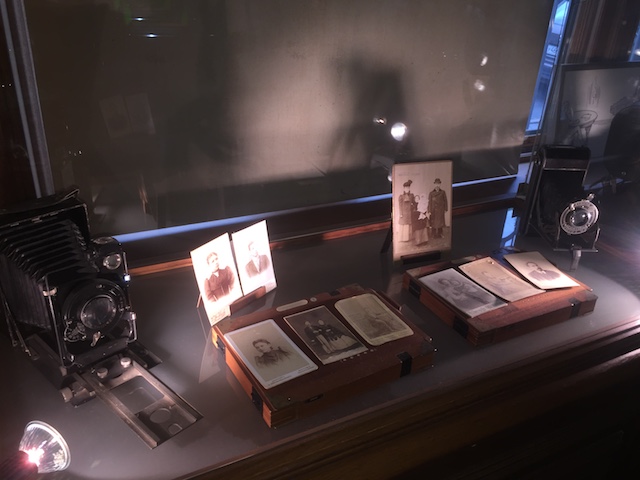Saint Petersburg –The Optical Museum in Saint Petersburg is the first Russian interactive educational exposition. It was created as a part of the innovative educational programme of the National Research University of Information Technologies, Mechanics and Optics (ITMO).
It is located in one of ITMO University’s buildings which was the house of a very famous Russian merchant called Eliseyev (before the revolution), and was the “birthplace of holography,” according to Professor Sergei Stafeev of the Faculty of Physics and Engineering at ITMO University.
 As part of a media trip organised by ITMO University, Daily News Egypt was invited along and had the chance to tour the museum and learn about its exhibitions. The museum contains 11 halls which recount the history of optics and modern technologies, each exhibit illustrates a particular optical phenomenon.
As part of a media trip organised by ITMO University, Daily News Egypt was invited along and had the chance to tour the museum and learn about its exhibitions. The museum contains 11 halls which recount the history of optics and modern technologies, each exhibit illustrates a particular optical phenomenon.
Stafeev said that the museum is not only for holograms but it is also interested in all optical phenomena. He explained that the museum is about 400 sqm, and holds about 200 different exhibits about holography and all optical phenomena, mirrors, and history of optics.
The museum aims to activate the concept of edutainment, which mixes education with entertainment, to make scientific knowledge more interesting for audience, particularly children.
Visitors to the museum can freeze their own shadow, become the lord of particles, and even fly a little. The interactive format in the museum gives visitors the opportunity to study science with interest.
In 2015, the museum hosted the Magic of Light exhibition organised by ITMO University, in cooperation with the Greek Hellenic Institute of Holography. In 2016, the museum held the Living Light Exhibition (Light Alive), which told visitors about the magical and beautiful properties of light. Magic of Light made a trip to Moscow (2016) and Shanghai (2019).
 Stafeev noted that the museum has one of the best types of holograms in the world, called OptoClones, which is an ultra-realistic full-colour hologram that creates the illusion of the physical presence of a three-dimensional object. The project was recognized in 2015 by the International Association of Holography as the best project.
Stafeev noted that the museum has one of the best types of holograms in the world, called OptoClones, which is an ultra-realistic full-colour hologram that creates the illusion of the physical presence of a three-dimensional object. The project was recognized in 2015 by the International Association of Holography as the best project.
The holograms include some of the most popular treasures of the Russian Empire: Fabergé Imperial Easter Eggs and objects from the Moscow Diamond Fund.
“We have a dream to prepare the OptoClones from the best treasures of the most famous worldwide museums, and if we did that, we can prepare an absolute unique holographic museum,” Stafeev said. He explained further that this technique could be used after that in metropolitan cities to display international treasures.
“If you really like to know some science, you need to know the history of this science. In 1961, one of the students of our institution, Yuri Denisyuk, started to think about a three-dimensional image of the real object and then invented volume holography; the process used to make white light reflection holograms,” said Stafeev.
He added that in 1962 Denisyuk invented the method of image recording in three-dimensional environments allowing one to save information about phase, amplitude, and the spectral structure of the wave coming from an object. Denisyuk also used mercury arc lamps as a light source.




